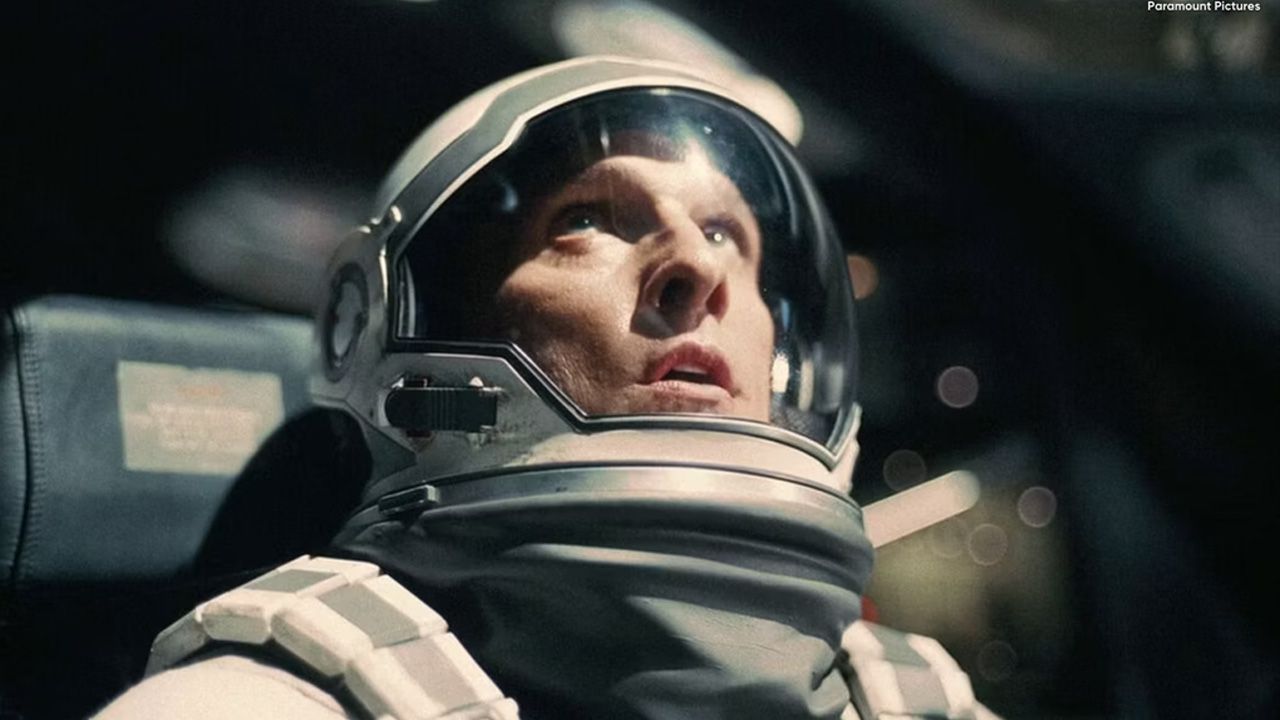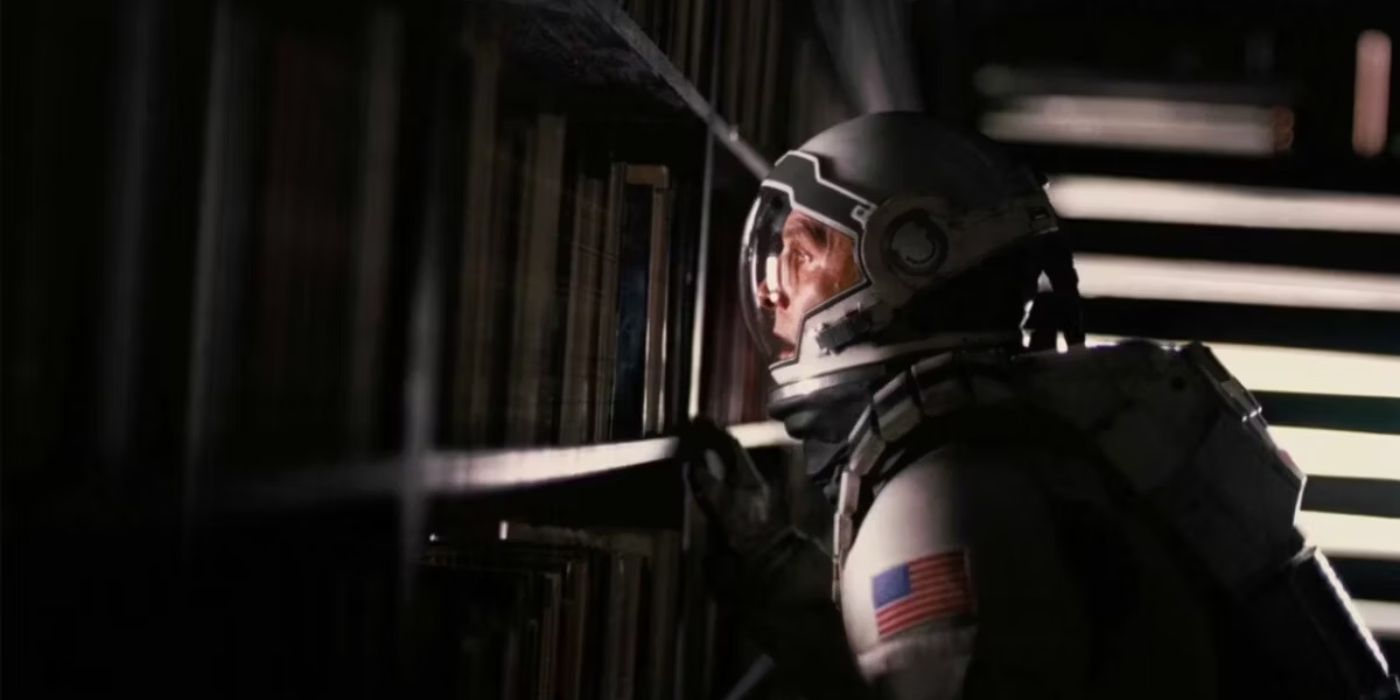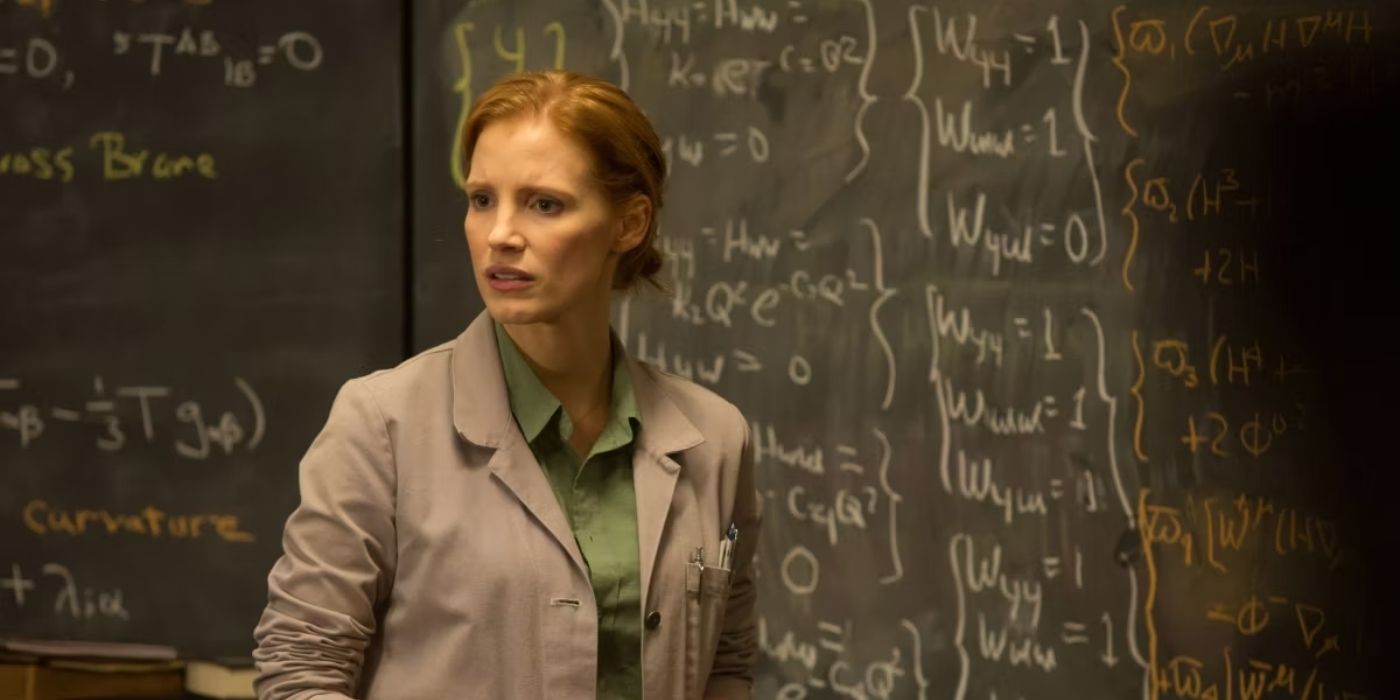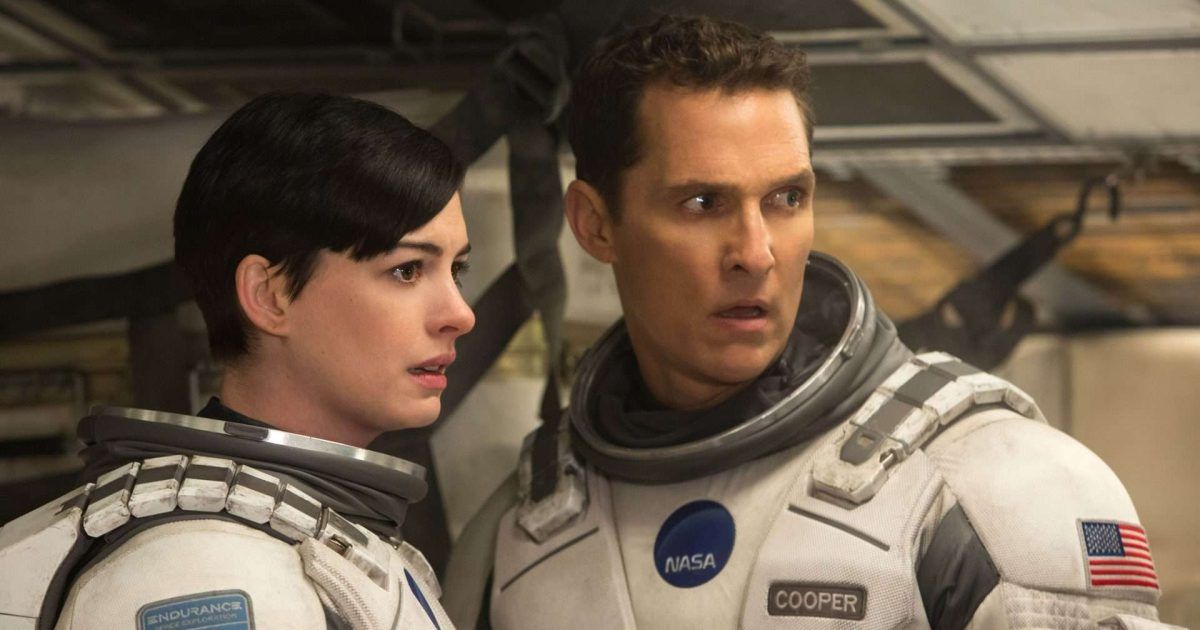
Even though it came out over ten years ago, Interstellar still feels incredibly modern. In 2025, you’ll often find it popular on streaming services and sparking conversations online, with fans still analyzing its ending. Christopher Nolan’s space film has become more than just a big sci-fi hit; it’s proof that cinema can create truly amazing and moving experiences. Whether you’re a longtime fan or discovering it for the first time, Interstellar continues to impress, not just with its complex ideas about science, but with its powerful emotional story.
As a huge film fan, I was completely captivated by this movie. It’s set in the not-too-distant future where Earth is becoming unlivable, and it follows Cooper, played by Matthew McConaughey, who used to be a NASA pilot but is now a farmer. He gets pulled back into space for an incredible mission: finding a new planet for humanity to live on. It’s heartbreaking because he has to leave his daughter, Murph, and a world that’s really falling apart. What I loved is how the director really tackles complex ideas about time and space to tell a deeply personal story about survival, the sacrifices we make, and how time isn’t always what it seems. It’s a really ambitious film, but it never loses sight of the emotional core.
When Interstellar came out, it both amazed and sparked a lot of discussion. Critics loved its stunning visuals, powerful music by Hans Zimmer, and how scientifically accurate it was, aided by physicist Kip Thorne. The film received five Academy Award nominations and won the Oscar for Best Visual Effects. However, the ending – with the tesseract, bookshelf, and the idea of love as a dimension – was particularly divisive and thought-provoking for viewers. Even today, people are still debating the meaning of Interstellar’s conclusion.
Let’s explore the ending of Interstellar. What exactly occurs in those last scenes, and what does it all signify, both from a scientific and emotional perspective? Here’s a detailed explanation.
‘Interstellar’s Ending: What Happened to Cooper and Murph?

Paramount Pictures
During the third act of Interstellar, the spaceship Endurance runs dangerously low on fuel, and the crew faces the immense danger of a black hole. To give humanity a chance to survive, Cooper makes a selfless decision: he and his robot companion, TARS, detach from the ship to reduce its weight, allowing his teammate Amelia Brand to continue the mission to planet Edmunds. This sends Cooper hurtling into the black hole, where he must escape the ship’s destruction. Instead of facing certain doom, he enters a ‘tesseract’ – a five-dimensional representation of time simplified so he can understand it.
This unique space is designed to look like a recreation of Cooper’s daughter Murph’s bookshelf, and he uses it to try and communicate with her while observing her life from a higher dimension. Through this connection, Cooper shares crucial information with Murph (played by Jessica Chastain), ultimately helping her find a way to save humankind. After being sent out of the dimensional space, Cooper is rescued and arrives at a new Earth colony, only to realize that nine decades have passed on Earth, despite him aging very little. He then reunites with his now-elderly daughter, who encourages him to find Brand, who may have successfully established a colony on another planet.
The Big Twist: Who Built the Tesseract in ‘Interstellar’?

Paramount Pictures
The scene within the tesseract is arguably the most visually striking and scientifically interesting part of the film. According to Gizmodo, its depiction of a fifth dimension is a surprisingly accurate representation of what it might be like to enter a black hole, and it helps viewers grasp the idea of space-time.
The film refers to the creators of the tesseract as “they,” and it’s eventually shown that “they” are actually humans from the future who have evolved into fifth-dimensional beings, existing outside of time as we know it. Although it appears Cooper ended up in the tesseract because of aliens, the truth is that future humans created it and sent him there to ensure humanity’s survival. They designed the space to help Cooper understand the situation and communicate crucial information to his daughter, Murph, by sending messages through her bookshelf using Morse code.
Murph’s Ghost
As a huge fan of the film, I’ve always been fascinated by the tesseract. It really highlights how Christopher Nolan loves using those mind-bending causal loops! Seeing the tesseract scene, it hit me – Cooper was the ‘ghost’ haunting Murph all along, and that’s what started his whole space journey! It’s incredible to think that he was able to send the coordinates for NASA’s base through the dust storm at the beginning, using the tesseract. Without that connection – without him being Murph’s ghost – he never would have known how to get to NASA and join the mission. It’s a perfect, circular story!
Cooper manages to send the coordinates to himself even though he doesn’t know where the base is located – it’s all thanks to a time loop. This isn’t the only one in the movie, though. Future humans, existing within a fifth dimension, created the tesseract, which allowed Cooper to send messages to Murph, ultimately saving humanity. While it can be tricky to understand, this time loop essentially allows future humans to rescue themselves.
What Does ‘Interstellar’s Ending Mean?

Paramount Pictures
The ending of Interstellar is famously complex and leaves many viewers wondering about its meaning. The film delves into concepts like space, time, and even a fifth dimension, but it’s also a story about the dangers of climate change and how it could make Earth uninhabitable. Ultimately, the movie emphasizes that climate change is a serious threat with potentially devastating results if we don’t address it.
Love is a key theme in the movie Interstellar. Although the film strives for scientific accuracy, its ending relies heavily on the idea that love can overcome even the vastness of space and time. As one character explains, love is something we can feel that exists beyond the usual limits of time and distance, and the film actually shows this to be true. The love between a father and daughter is what ultimately helps save humankind. Even though they are separated by incredible distances, their connection is powerful enough to save them both. This focus on love feels surprisingly hopeful in a movie that otherwise presents a very realistic and sometimes bleak view of the future. The film suggests that love isn’t just an emotion, but a force that can have lasting effects and even change what happens.
A Potential ‘Interstellar’ Sequel?

Paramount Pictures
The possibility of a sequel to the movie Interstellar keeps coming up. Over the years, fans have speculated and shared ideas online, and there have been many hopeful reports. However, as of 2025, Interstellar 2 hasn’t been announced. Director Christopher Nolan hasn’t said anything about it, and he generally prefers to move forward with new projects rather than revisit older ones unless it’s a planned series of three films.
Despite some initial criticism, Interstellar has become increasingly appreciated over time. Its recent return to IMAX theaters in 2024 was a huge success, selling out shows and reminding audiences of Christopher Nolan’s incredible filmmaking. The film also regularly appears on streaming services’ lists of top science fiction movies, introducing it to new viewers constantly.
I’m still thinking about Interstellar long after seeing it – it’s one of those films that really stays with you and inspires a lot of discussion. If you want to watch it again (or for the first time!), it’s currently available to rent on Apple TV and Prime Video.
Read More
- Where Winds Meet: Best Weapon Combinations
- 3 PS Plus Extra, Premium Games for December 2025 Leaked Early
- Jujutsu Kaisen Execution Delivers High-Stakes Action and the Most Shocking Twist of the Series (Review)
- TikToker Madeleine White Marries Andrew Fedyk: See Her Wedding Dress
- 7 Most Overpowered Characters in Fighting Games, Ranked
- Best Controller Settings for ARC Raiders
- Hazbin Hotel season 3 release date speculation and latest news
- Where Winds Meet: How To Defeat Shadow Puppeteer (Boss Guide)
- Superman’s Breakout Star Is Part of Another Major Superhero Franchise
- Jim Ward, Voice of Ratchet & Clank’s Captain Qwark, Has Passed Away
2025-10-29 04:19